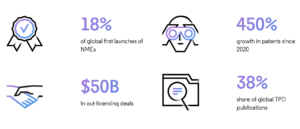
Turning cancer into a chronic disease
Following last year's approval by the US FDA, the EU's EMA has now also approved the first two T-cell-based immunotherapies against certain types of cancer. This marks the ultimate proof-of-concept for the acceptance of patient-individualised cellular immunotherapies. The regulatory authorities have moved fast, together with the companies and manufacturers, to bring these products to patients as quickly as possible. This is a good start but what does the future hold?
Initially, prices for such cellular therapies have been set at high levels, mainly due to the individualised nature of the manufacturing processes, but we can anticipate that robotics and automation will play a decisive role in the manufacturing of these products over the next five to ten years. Even more, if production sites are located at nearby hospitals where patients are being treated, this should have a positive effect on reducing the enormous logistic infrastructures that are needed today to deliver these thera-
pies to patients in need. Furthermore, it may become possible to treat patients with fewer but more potent cells, reducing time and costs in cellular manufacturing. Taken together, those improvements have the potential to substantially reduce treatment costs over the years to come.
Beyond manufacturing and delivery costs, possible severe side effects are still a major concern in T cell immunotherapy. We see a lot of research ongoing to find ways to gain better control over T cell activity for example, by using inducible T cell receptors that can be turned on and off in patients’ T cells as needed. The immunotherapy field shows tremendous growth, and we can anticipate innovation will expand at a rapidly growing pace. Today’s first-generation products will be subject to fast evolution. One important consideration is how long a particular product will remain on the market. Also especially challenging from a researcher’s point of view is how to optimize T cell therapies for solid tumor indications, where one must ensure that T cells can enter the tumor micro-environment, maintain their functions, and tackle the hostile setting that tumors create for the immune system.
Generally speaking, big pharma and big biotech recognise more and more that this is an arena they want to play in, and some are probably already looking for means to acquire expertise and know-how, as well as products and technologies from existing companies. Thus, we will also see many collaborations and probably more acquisitions over the next years.
Most importantly, from a patient and medical point of view, cell therapy is on its way to further revolutionize cancer treatment and become a standard treatment option by turning cancer more into a chronic, if not curable, disease.


 White House
White House Clarivate
Clarivate H. Zell - wikipedia.org
H. Zell - wikipedia.org